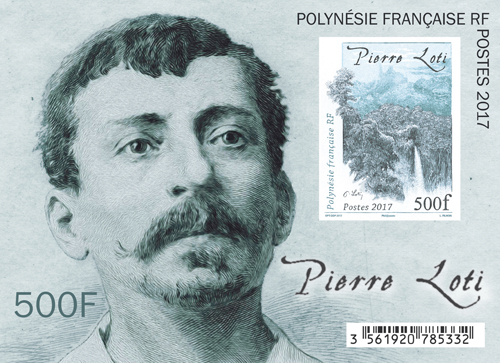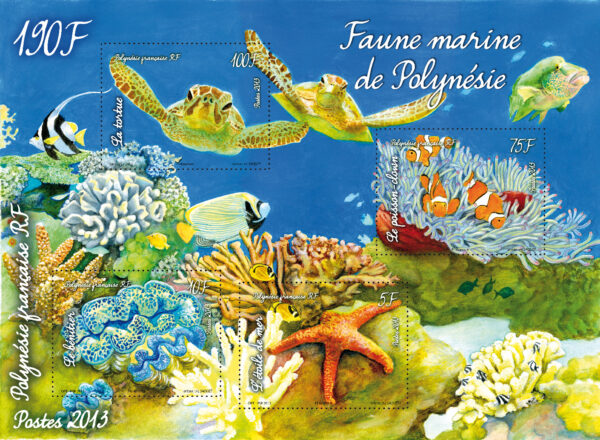Pierre LOTI, Julien Viaud de son vrai nom, né à Rochefort le 14 janvier 1850, fut officier de la marine nationale, grand voyageur et surtout romancier reconnu de ses pairs.
A 20 ans, après avoir été reçu à l’Ecole navale à Paris, il prend la mer comme aspirant de première classe. Il ne cessera plus de sillonner les mers du globe et c’est en novembre 1871 que Loti embarqua de Valparaiso à bord de la frégate « La Flore », à destination de Tahiti. Reçu par la reine Pomare IV, elle le rebaptisera Loti, surnom qu’il donnera par la suite au personnage de son livre « Le mariage de Loti ou Rarahu, idylle polynésienne », avant d’en faire son pseudonyme d’écrivain.
Outre les écrits décrivant la société et la nature exubérante de cette époque, on lui doit plusieurs dessins des îles de Tahiti et Moorea. Lors de son passage en Polynésie, il visitera plusieurs îles de la Polynésie, des marquises aux îles sous le vent, avant de la quitter deux mois plus tard.
« Le mariage de Loti ou Rarahu, idylle polynésienne», écrit en 1879, à partir de son journal de voyage, ravive le mythe du paradis des îles des mers du sud, qu’il décrit en ces mots : « Les heures, les jours, les mois, s’envolaient dans ce pays autrement qu’ailleurs; le temps s’écoulait sans laisser de traces, dans la monotonie d’un éternel été. Il semblait qu’on fût dans une atmosphère de calme et d’immobilité, où les agitations du monde n’existaient plus. »
Elu à l’Académie française en 1891, il quitte la marine en 1910. Il ne revit plus jamais Tahiti et s’éteint à Hendaye à l’age 73 ans.
La Poste Polynésienne souhaite lui rendre hommage au travers de ce timbre tiré d’une de ses illustrations de la cascade de la Fautaua, haut lieu de Tahiti, témoin de son passage, où trône désormais une statue à son effigie.
Pierre Loti, Julien Viaud of his real name, born in Rochefort on January 14th, 1850, was an officer of the national navy, the big traveler and especially a
recognized novelist.
At 20 years old, having been received at the naval school in Paris, he takes the sea as first class aspirant. He will not stop crossing the seas of the globe and it is in November, 1871 that he embarked of Valparaiso aboard the ship « The Flora », bound to Tahiti.
Received by queen Pomare IV, she will rename him « Loti », nickname which he will give afterward to the main character of his book « The marriage of Loti », before making his writer’s name. Besides his writing describing the society and the exuberant nature of this period in Tahiti, He did several precious drawings of islands of Tahiti and
Moorea. During his passage in Polynesia, he will visit several islands of the Polynesia, from Marquesas to the Leeward Islands, before leaving two months later.
« The marriage of Loti », writen in 1879, from his travel diary, revive the myth of the paradise of the Southen Seas islans, which he describes in these words: « Hours, days, months, flew away in this country otherwise than anywhere else; the time passed by without trace, in the monotony of a eternal summer.
It seemed that we are in an atmosphere of peace and immobility, where the agitations of the world did not exist any more. »
Elected to the French Academy in 1891, he left the navy in 1910. He never saw again Tahiti and died in Hendaye at the age 73 years old. The Polynesian Post office wishes to pay him tribute through this stamp, that he illustrated, of the waterfall of Fautaua, a well known place of Tahiti, witness of his passage, where is now a statue in his effigy.



Reviews
There are no reviews yet.